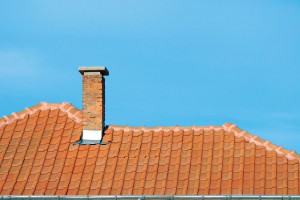When the winter weather is mild, your chimney is probably one of the farthest things from your mind. In many places in the Southeast, winter temperatures can often stay in the 40s and 50s, meaning that most of our fireplaces will stay dormant for much of the winter. Many people are lulled into believing that, if you aren’t using your fireplace, then it isn’t getting dirty so there’s no need to clean it. However, it’s actually even more important to clean your chimney when the weather is warmer.

Your chimney collects just as much dirt and creosote in warmer weather as it does when you are using the chimney often in cold temperatures. In warmer temperatures, the chimney draft is slowed. This reduced airflow leaves smoke, debris and creosote collecting in the chimney flue longer. The chimney doesn’t move the warmer air out as efficiently. So, remember, just because you aren’t using your chimney (or even thinking about it) doesn’t mean that it doesn’t require cleaning and maintenance.
Creosote is a black, tar-like substance that is a natural by-product of burning wood in your chimney. It collects on the walls of your chimney and gets harder to remove over time. Creosote buildup is extremely flammable, and this is why it’s important to have your chimney cleaned regularly.
The soot collecting in the chimney can also produce unpleasant odors. Creosote has a strong, acrid odor and, if the weather is wet, it gets much worse. Creosote and other debris from a dirty chimney can also cause respiratory problems.
Even if you aren’t burning wood in your fireplace very frequently because you live in an area that experiences mild winters, it’s important to remember that warmer weather does reduce the airflow in your chimney. This reduced airflow causes more creosote buildup. So, your chimney keeps getting dirty even if you aren’t using it much. Be sure to have your chimney cleaned regularly, regardless of the temperature outside.
